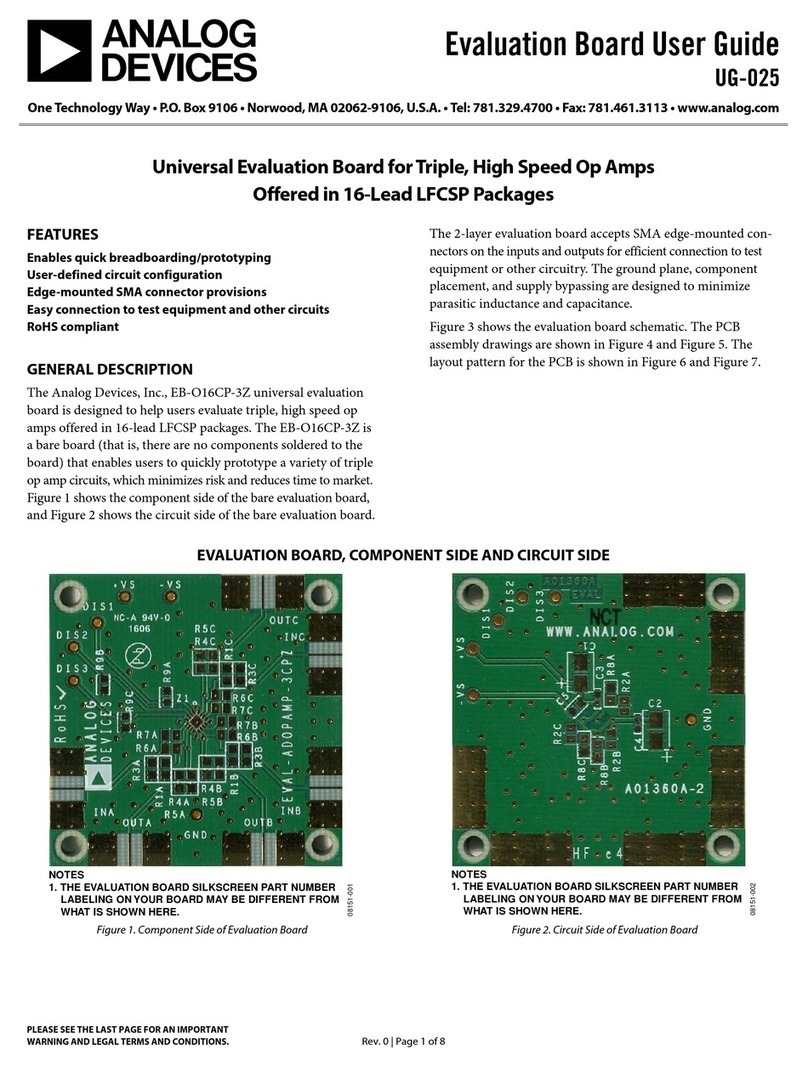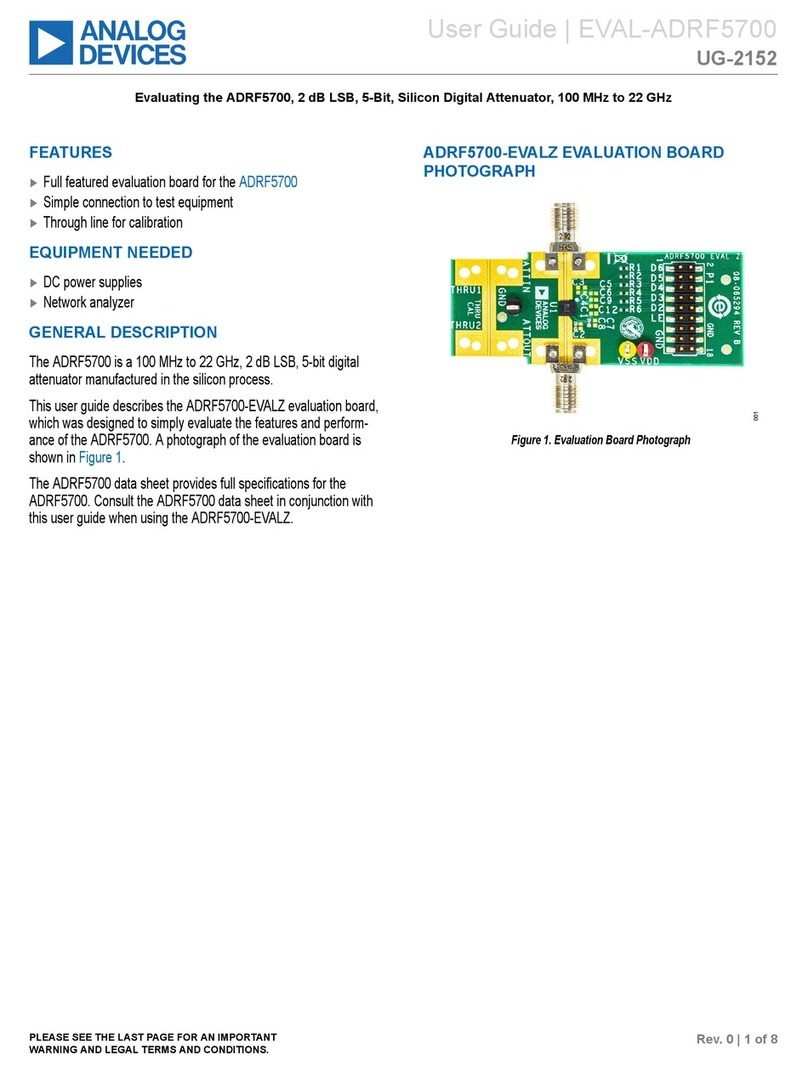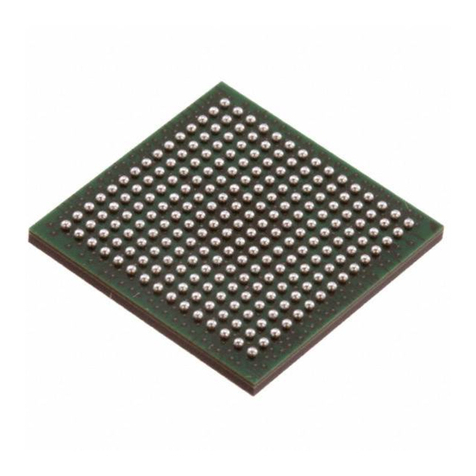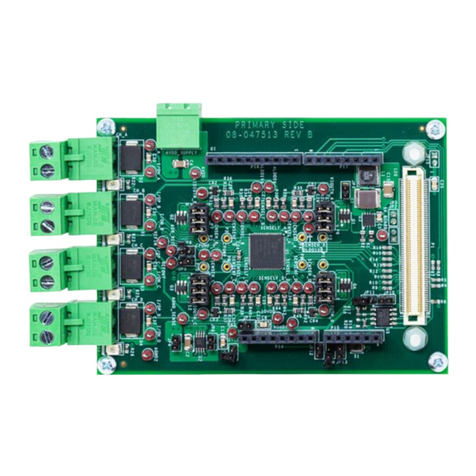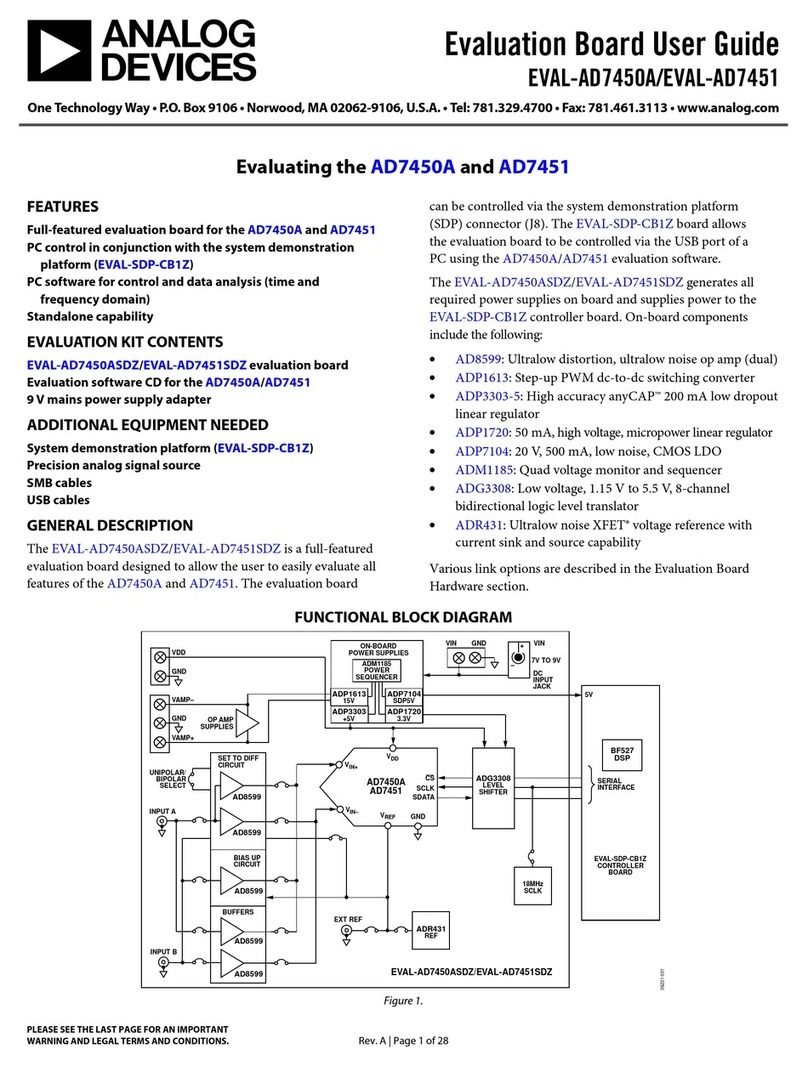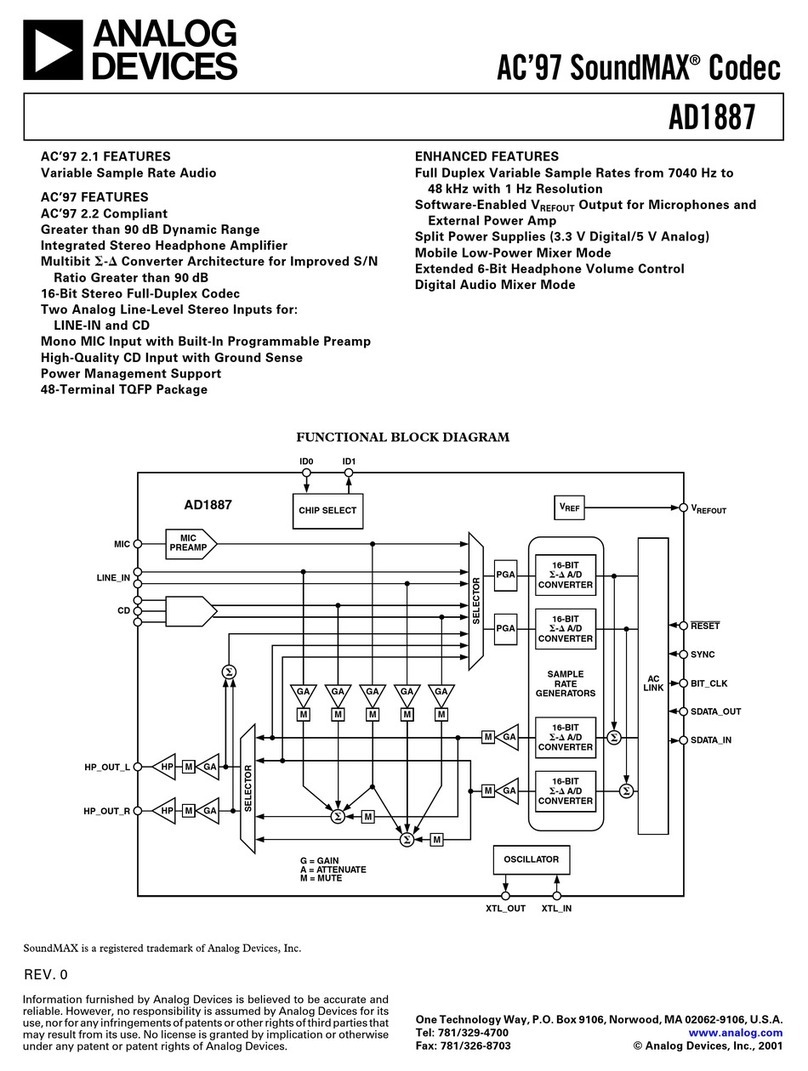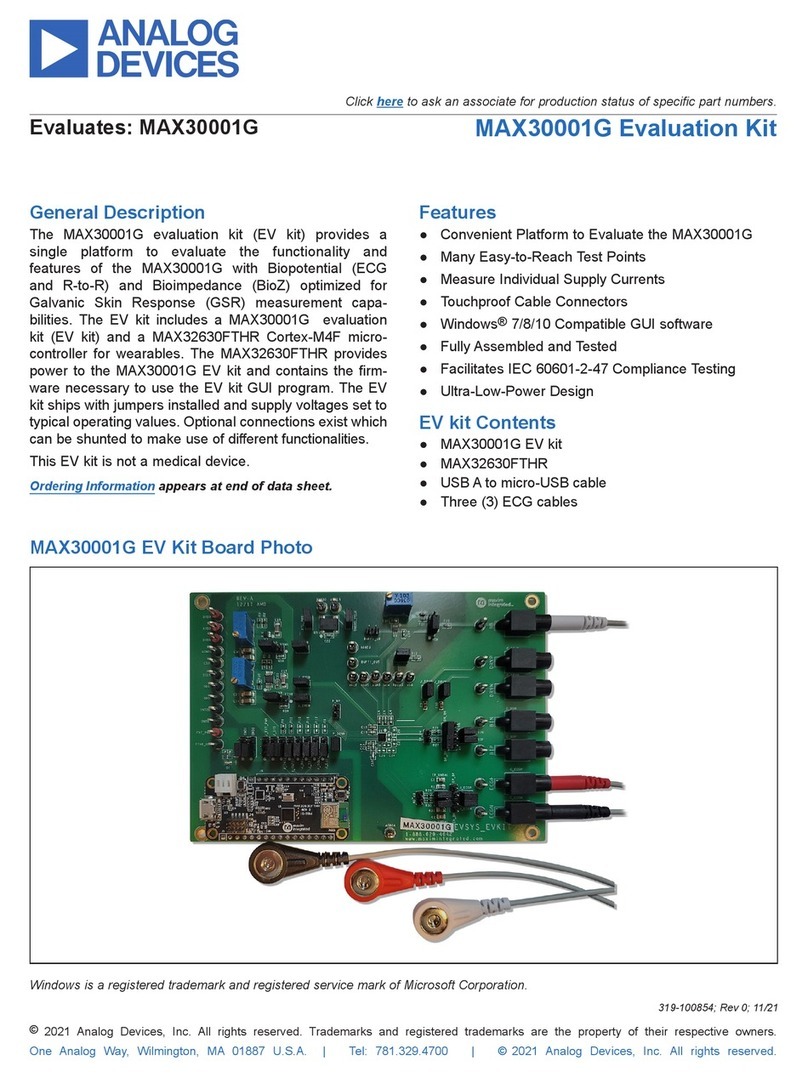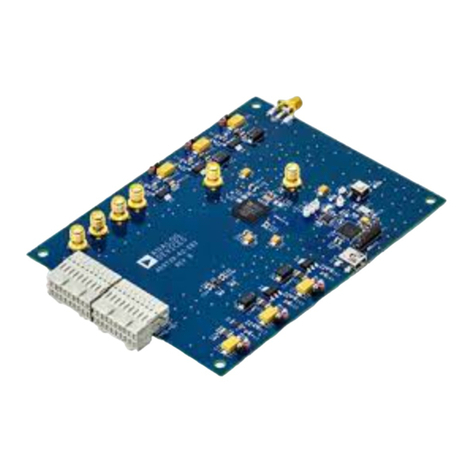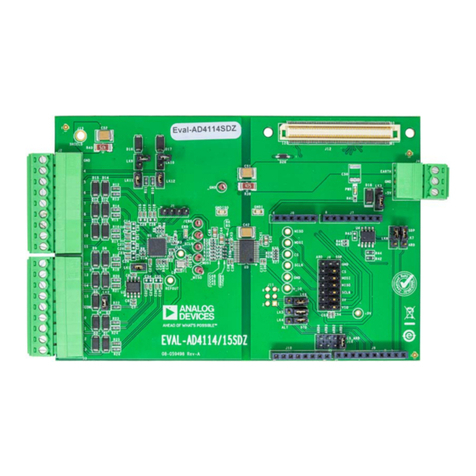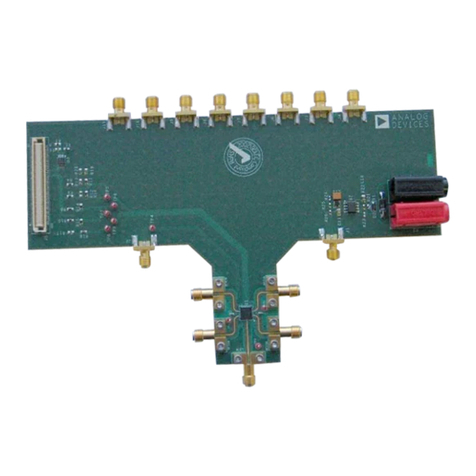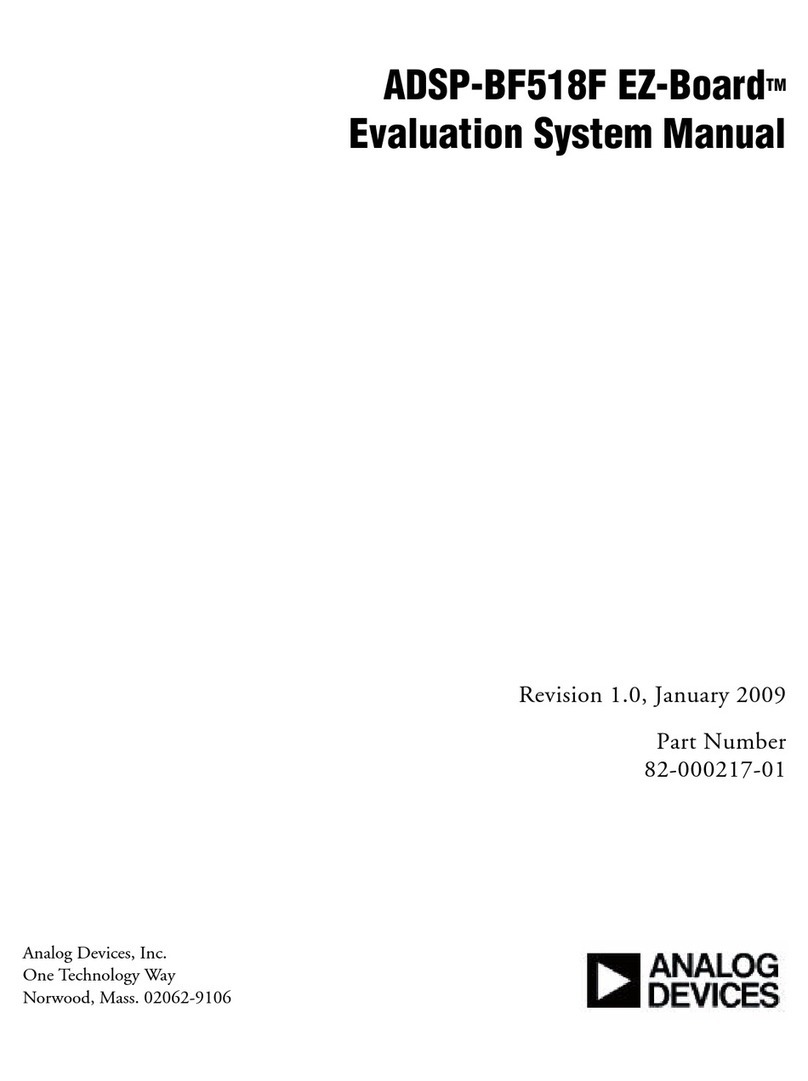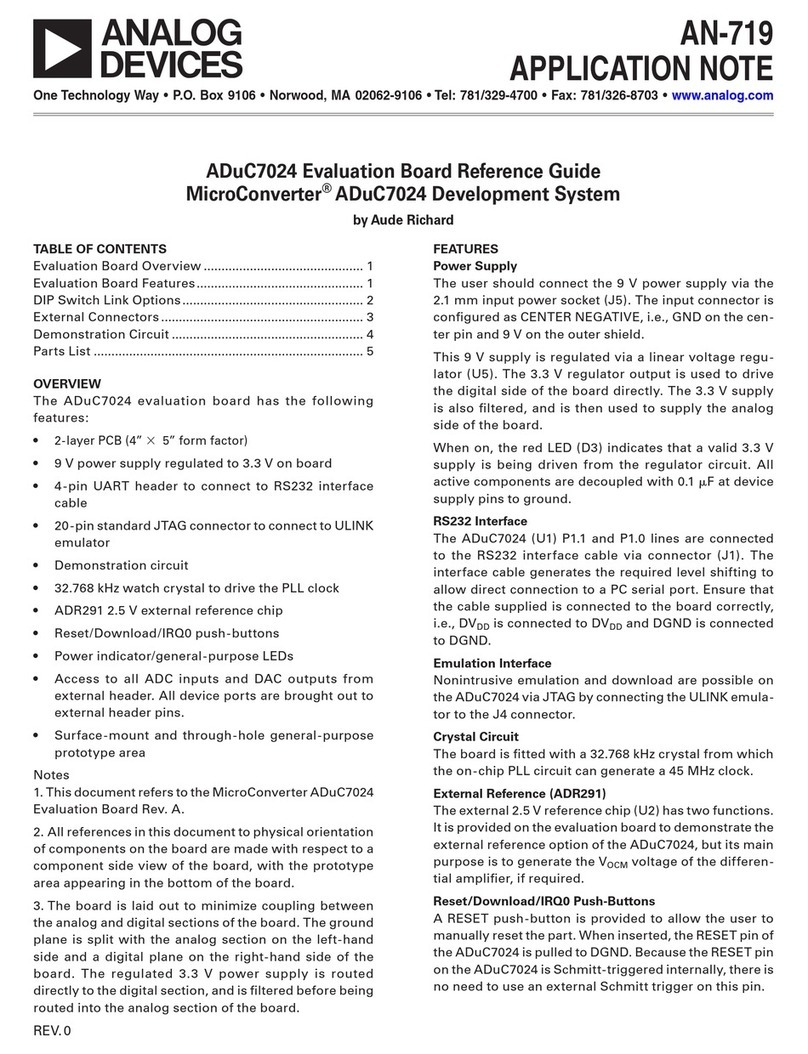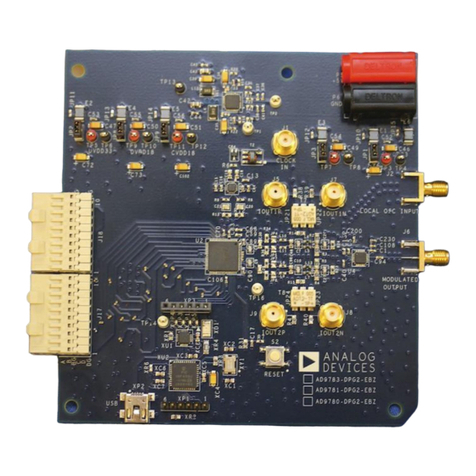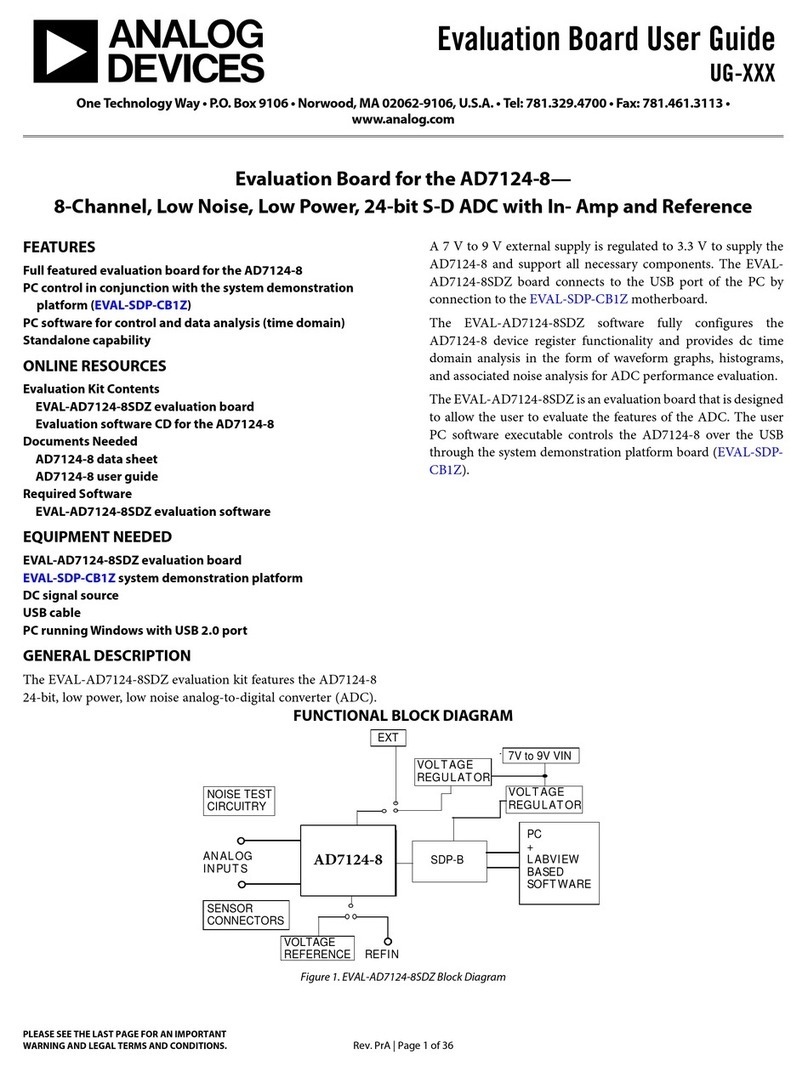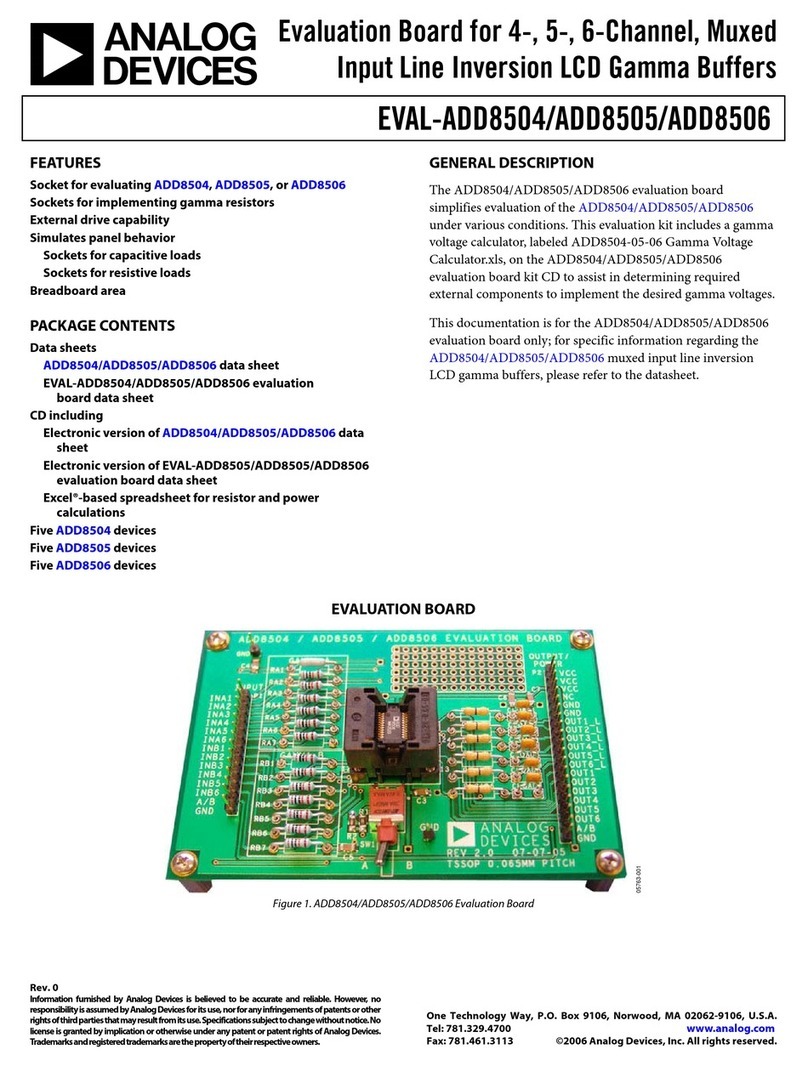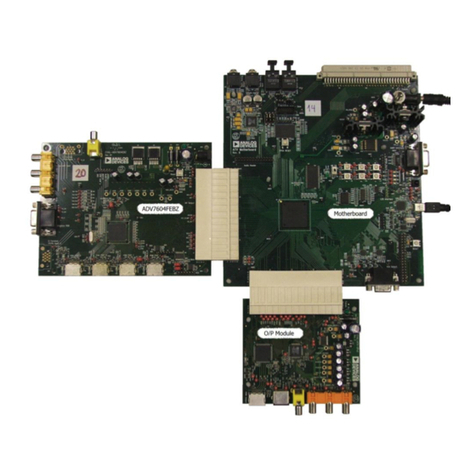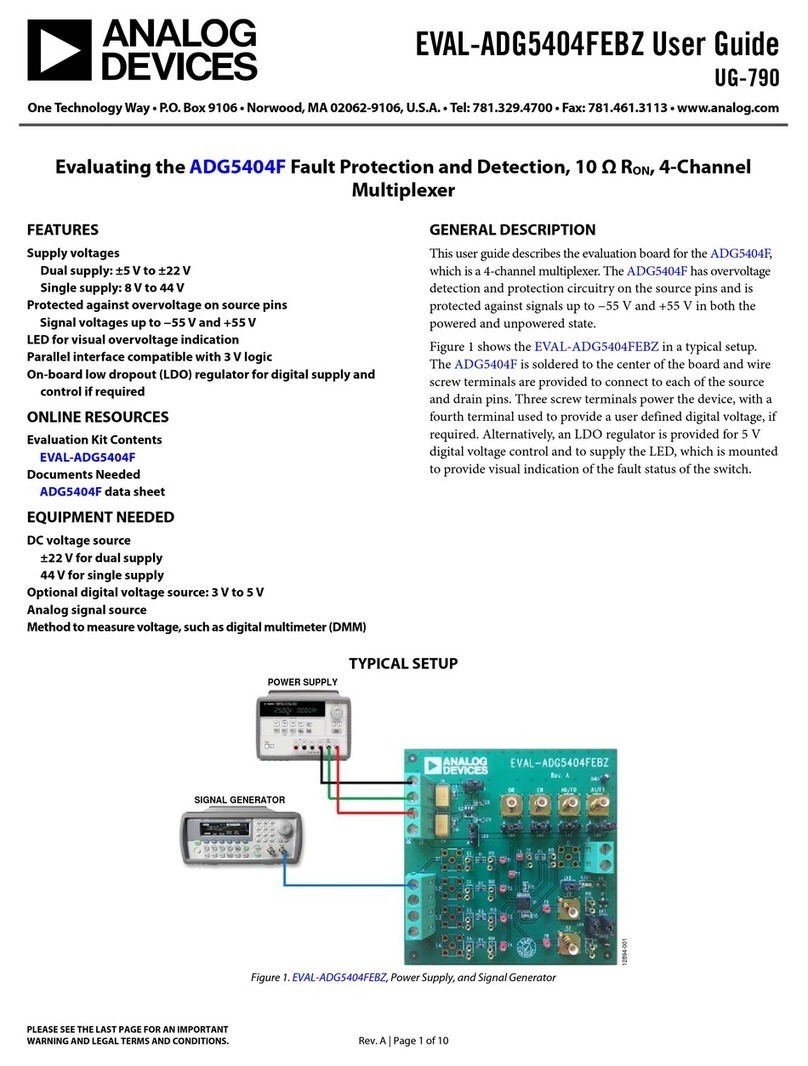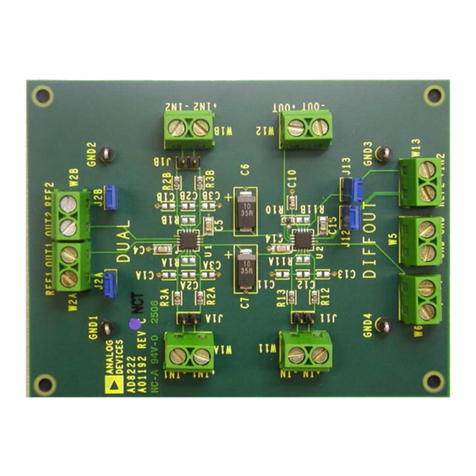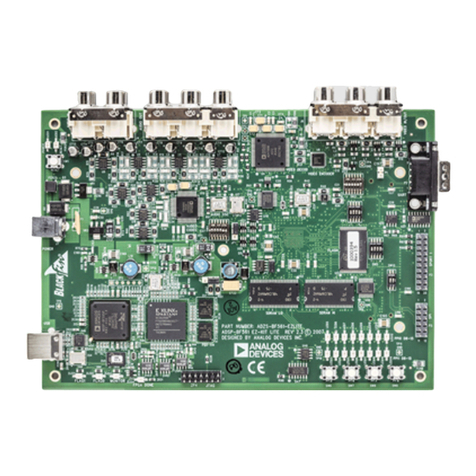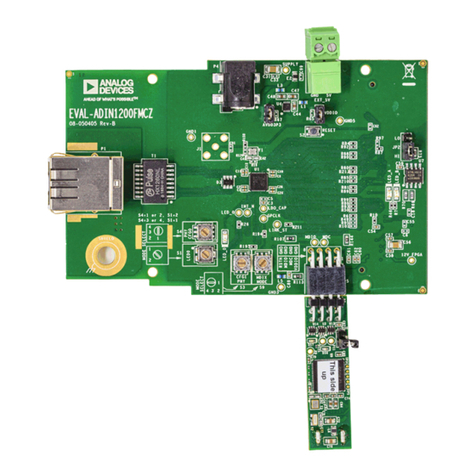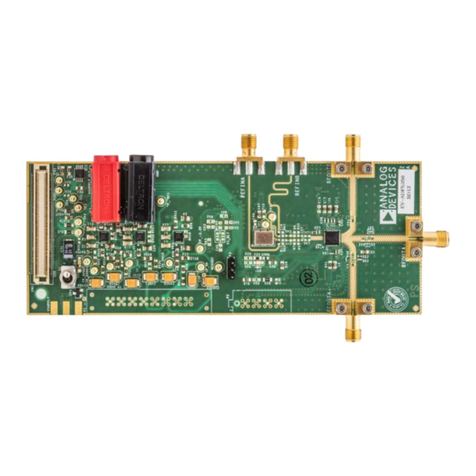
Preliminary Technical Data EVAL AD5933-U1
Rev. PrA | Page 9 of 16
To set the frequency sweep step size, enter 20 (Hz) in the Delta
Frequency box (Arrow 1A). The frequency step size is 24-bit
accurate.
To set the number of increments along the sweep, enter 511 in
the Number Increments box (Arrow 1A). 511 is the maximum
number of increments that the device can sweep across. The
value is stored in a register as a 9-bit value.
To determine the delay between the time a frequency increment
has taken place on the output of the internal DDS core and the
time the ADC samples the response signal, enter 15 (cycles) in
the Number of Settling Time cycles box (Arrow 1A). For
example, if the next output frequency is 32 kHz, the delay
between the time the DDS output this frequency and the time
the ADC samples the response signal is 15 × (1/32 kHz). The
maximum number of settling time cycles delay that can be
programmed to the board is 511 cycles. The value is stored in a
register as a 9-bit value. This value can be further multiplied by
a factor of 2 or 4, as explained next. If you are sweeping across a
high Q structure such as tuning fork or resonant circuit, make
sure that the settling time is sufficient such that the structure
settles before incrementing the frequency step. This is achieved
by increasing the settling time.
Set the output excitation voltage gain control (either
2/1/0.5/0.2 V p-p) of the AD5933 (at Pin 6,VOUT1 which is
connected to evaluation board test pin T8 to 1 V p-p (see the
Evaluation Board Schematic). Set the post gain of the ADC
response stage (either X1 or X5) to X1 (Arrow 1B). To choose
the internal RC oscillator as the system clock, check Internal
RC Oscillator in the System clock panel. NOTE: For a narrow
bandwidth/high Q response, for example, tuning fork, make
sure that the ADC gain is set to a gain of 5 and the output
voltage is set to 1 V p-p.
Choose a series resistor or a resistor in parallel with a capacitor
in the Calibration Impedance panel (Arrow 1B). For this
example, choose capacitor only to measure the impedance
sweep across a capacitor. For this example, enter 0(Ω) the
Resistor Value box, and 15E-12in the Capacitor Value box.
To program the sweep conditions register values into the
AD5933 RAM through the I2C interface, click Program
Registers (Arrow 2). As explained in previously, the value
programmed into the settling time cycles can be further
multiplied by a factor of 2 or 4 for a sweep (Arrow 3A). Click
X1 (the default), X2, or X4. To place the AD5933 into standby
or power-down mode, click Enter Standby Mode or Enter
Power Down Mode.
Click Calculate Gain Factor (Arrow 3B). An explanation of the
gain factor, which is the admittance per code of the calibrated
system, is provided in detail in the product data sheet. This
results in the gain factor being calculated for the calibration
impedance, which is returned to the interface and subsequently
used for the sweep across either the impedance under test. If
you want to use a gain factor that has been previously
calculated, click the returned gain factor and enter the new gain
factor.
05435-020
Figure 14.
After the system calculates the gain factor for the current
system setup, it appears in the calculated gain factor box.
To re-use the sweep setup under conditions other than those
that were initially programmed, or to reprogram different sweep
conditions, recalculate a new gain factor and re-enter it into the
interface to read back any significant results. The gain factor
calculated in software is not programmed into the AD5933
RAM and is valid only when the software program is running.
It is not retained when the software program is closed. However,
it is retained when the part is placed into power-down mode.
To begin t he s weep, click Start Sweep (Arrow 4). This returns
a plot of the impedance vs. frequency for the impedance
(Figure 13).The progress of the sweep is outlined with a
progress bar (Figure 15).
05435-028
Figure 15.
A message indicates that the sweep is complete.
To take a reading from the on board temperature sensor, click
Read Temperature. This returns the 13-bit temperature of the
device. See product data sheet for more information on the
temperature sensor.
